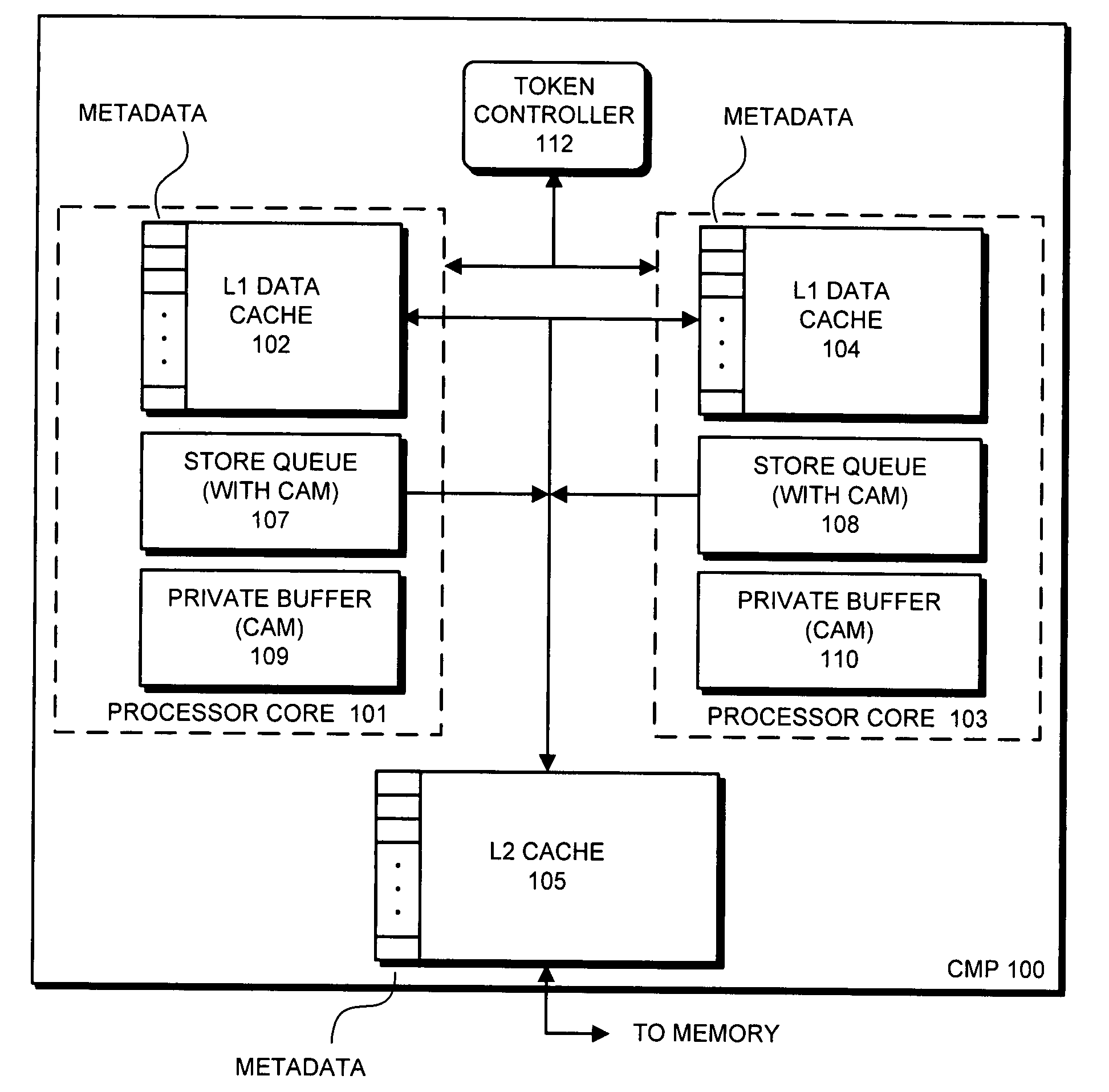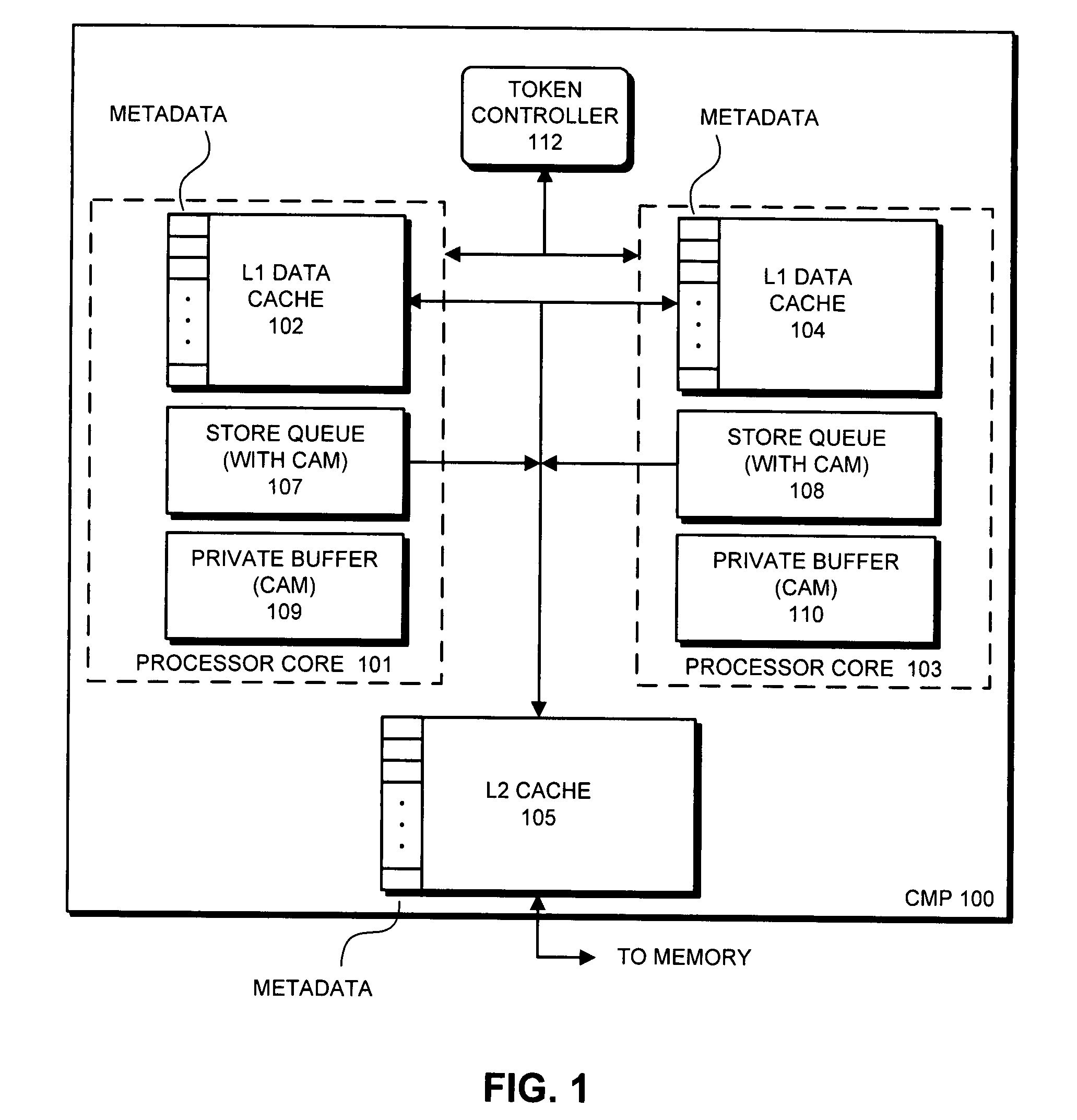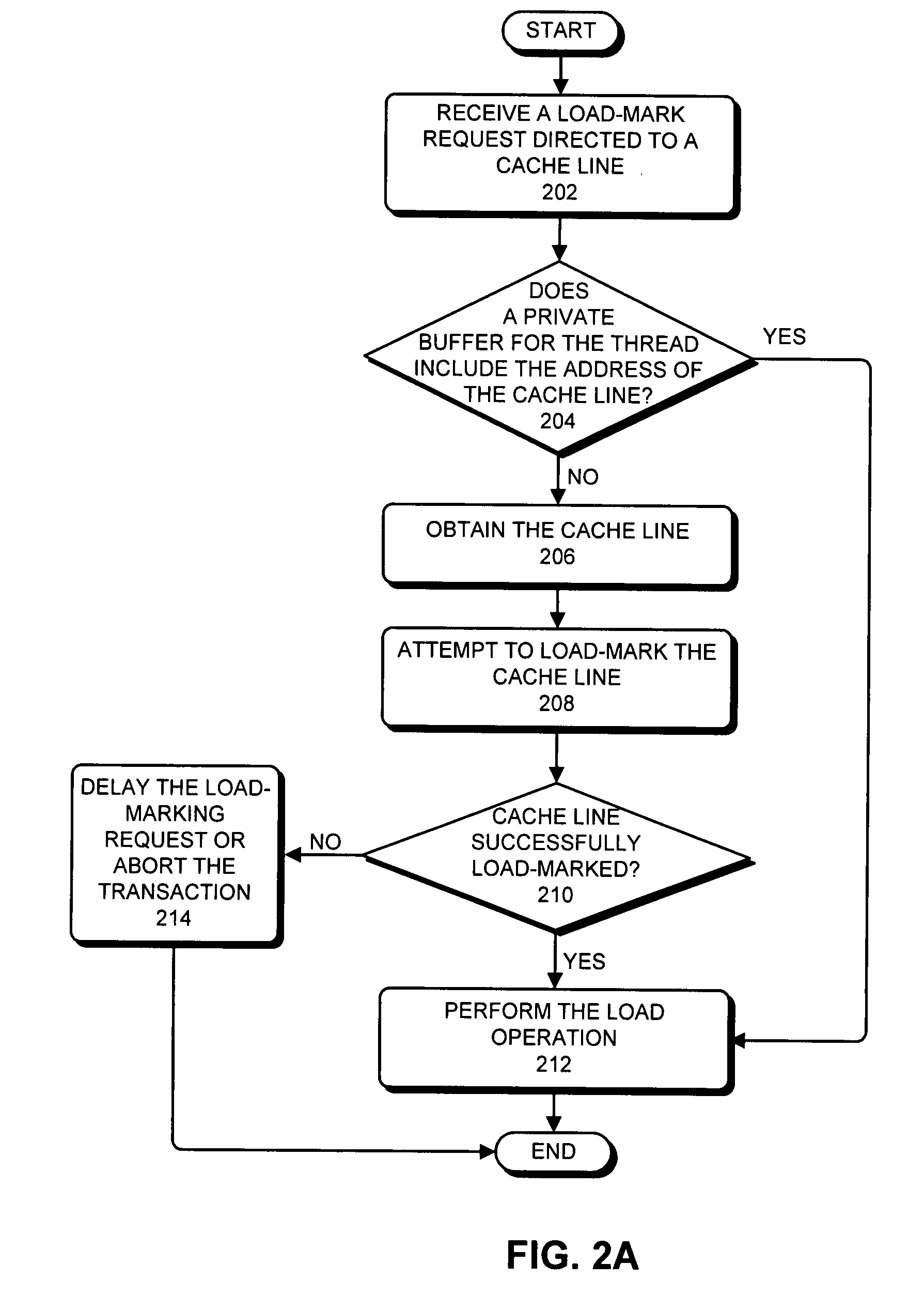Starvation-avoiding unbounded transactional memory
a transactional memory and unbounded technology, applied in the field of computer system design, can solve the problems of affecting the efficiency of large transaction execution
- Summary
- Abstract
- Description
- Claims
- Application Information
AI Technical Summary
Benefits of technology
Problems solved by technology
Method used
Image
Examples
Embodiment Construction
[0031]The following description is presented to enable any person skilled in the art to make and use the invention, and is provided in the context of a particular application and its requirements. Various modifications to the disclosed embodiments will be readily apparent to those skilled in the art, and the general principles defined herein may be applied to other embodiments and applications without departing from the spirit and scope of the present invention. Thus, the present invention is not limited to the embodiments shown, but is to be accorded the widest scope consistent with the claims.
Computer System
[0032]FIG. 1 illustrates an exemplary Chip Multi-Processor (CMP) system 100 in accordance with an embodiment of the present invention. CMP system 100 is incorporated onto a single semiconductor die, and includes two processor cores, 101 and 103.
[0033]Processor cores 101 and 103 include L1 data caches 102 and 104, respectively, and they share L2 cache 105. Along with L1 data cac...
PUM
 Login to View More
Login to View More Abstract
Description
Claims
Application Information
 Login to View More
Login to View More - R&D
- Intellectual Property
- Life Sciences
- Materials
- Tech Scout
- Unparalleled Data Quality
- Higher Quality Content
- 60% Fewer Hallucinations
Browse by: Latest US Patents, China's latest patents, Technical Efficacy Thesaurus, Application Domain, Technology Topic, Popular Technical Reports.
© 2025 PatSnap. All rights reserved.Legal|Privacy policy|Modern Slavery Act Transparency Statement|Sitemap|About US| Contact US: help@patsnap.com



